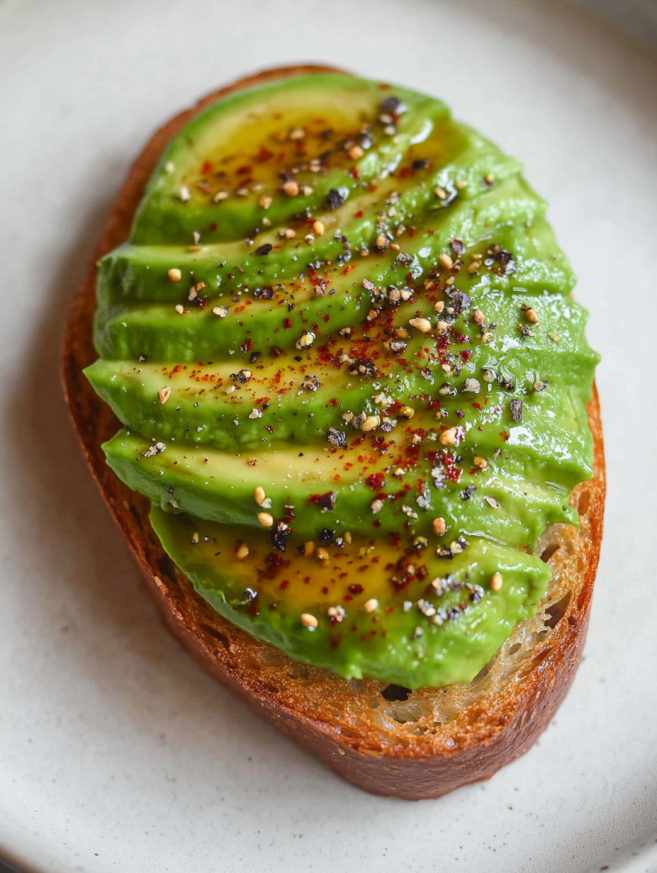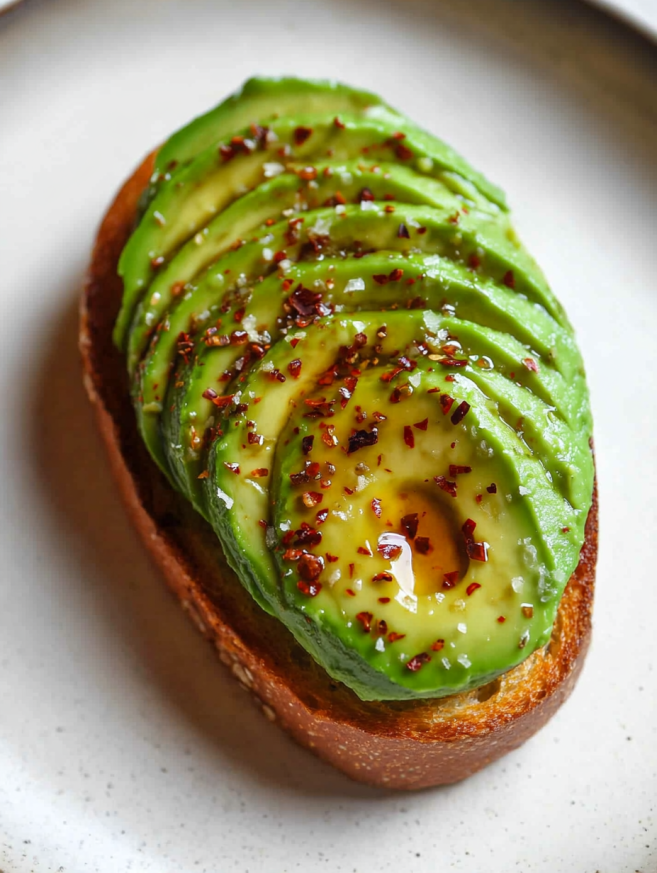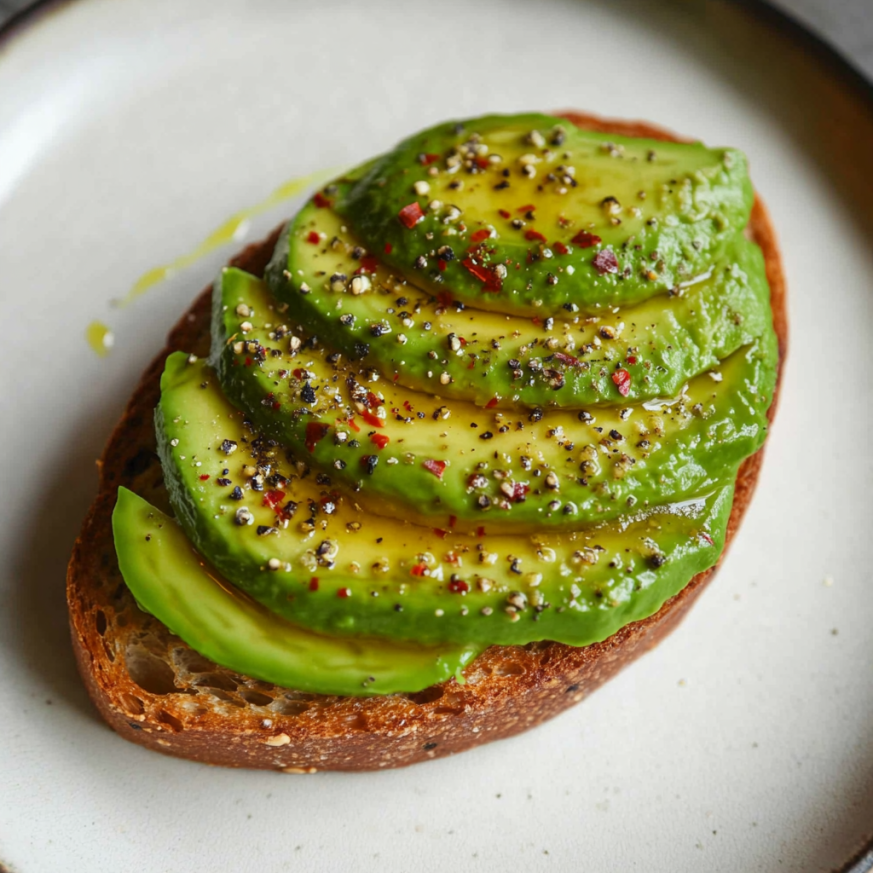There’s something almost meditative about making the perfect slice of avocado toast. What started as a millennial obsession has evolved into my personal morning ritual – a practice in mindful simplicity that transforms humble ingredients into something genuinely soul-satisfying. After countless iterations and Instagram-worthy attempts, I’ve discovered that perfection lies not in complexity, but in understanding how each element contributes to the whole. This isn’t just breakfast; it’s an art form disguised as simplicity.
Why This Recipe Transcends the Ordinary
Avocado toast has earned its reputation for good reason, but most people settle for mediocre versions that barely scratch the surface of what’s possible. The difference between good and extraordinary lies in technique and timing. By slowly toasting the bread in olive oil rather than using a traditional toaster, you create a golden, crispy exterior with a tender interior that provides the perfect foundation.
Furthermore, the way you handle the avocado determines whether you’ll have beautiful, intact slices that photograph beautifully or a mashed mess that tastes good but lacks visual appeal. The diagonal slicing technique creates elegant, restaurant-quality presentation that elevates this simple dish into something special.
Most importantly, this method teaches you fundamental knife skills and cooking techniques that apply to countless other recipes. Mastering these basics builds confidence and precision in the kitchen.
Simple, Quality Ingredients
The Foundation
- 1 perfectly ripe avocado
- 2 thick slices of sourdough bread
- Extra virgin olive oil
- Flaky sea salt
- Freshly cracked black pepper
- Red chili flakes
Selecting the Perfect Components
The quality of your ingredients makes or breaks this dish. Choose sourdough with a substantial crumb and good crust structure that can withstand the slow toasting process. Your avocado should yield slightly to gentle pressure but not feel mushy – this indicates optimal ripeness for clean slicing.
Optional Enhancements
Consider adding a drizzle of aged balsamic vinegar, fresh lemon juice, or everything bagel seasoning. Additionally, crumbled feta, hemp seeds, or microgreens can transform this into a more substantial meal.
The Art of Perfect Bread Preparation
Creating the Golden Foundation
Begin by generously drizzling both sides of your sourdough slices with high-quality olive oil. Don’t be shy here – the oil is what creates that incredible golden crust and rich flavor that sets this apart from ordinary toast.
Heat your cast iron pan over very low heat. This gentle approach is crucial for achieving the perfect texture. Place the oil-coated bread into the pan and resist the urge to rush the process. Low and slow cooking allows the bread to develop a beautiful golden color while maintaining a tender interior.
Timing and Technique
Cook each side for approximately 10-15 minutes, depending on your desired level of crispiness. The bread should develop a deep golden color and crispy exterior while remaining soft in the center. This extended cooking time allows the olive oil to penetrate the bread, creating layers of flavor and texture impossible to achieve with quick toasting methods.
Watch carefully during the final minutes, as the transformation from golden to burned happens quickly. The ideal result is a slice that’s crispy enough to support the avocado but tender enough to bite through easily.
Mastering the Avocado Technique
Proper Preparation
Using a sharp knife, cut your avocado in half lengthwise, working around the pit. Twist the halves apart and remove the pit safely by tapping it with your knife blade and twisting gently. This professional technique prevents accidents and keeps your avocado intact.
The Peeling Method
Here’s where technique becomes crucial. Cut off the narrow “nose” end of each avocado half – this creates a flat surface that makes slicing much easier. Next, place your finger between the flesh and skin, then gently peel back the skin in one piece. This method preserves the avocado’s shape better than scooping with a spoon.
Achieving Perfect Slices
Place the peeled avocado half on your cutting board and slice diagonally at approximately 1cm intervals. The diagonal cut creates longer, more elegant slices that arrange beautifully on the toast. Work slowly and steadily, maintaining consistent thickness throughout.
Once sliced, gently push the pieces apart slightly to create that signature fanned appearance. This technique not only looks professional but also makes it easier to transfer the slices intact.

Assembly and Presentation
The Transfer Technique
Using a large knife or offset spatula, carefully slide under the entire fanned avocado arrangement and transfer it to your golden toast in one smooth motion. This maintains the beautiful presentation while ensuring even distribution across the bread surface.
Gently press the avocado slices onto the toast to help them adhere, but avoid mashing them. The goal is to maintain those clean lines and distinct slices that make this dish visually stunning.
Final Seasoning
Finish with a generous sprinkle of flaky sea salt, which enhances the avocado’s natural creaminess and provides textural contrast. Add freshly cracked black pepper for warmth and visual appeal, then dust lightly with chili flakes for a subtle heat that complements the rich flavors.
Creative Variations to Explore
Mediterranean Style
Add crumbled feta cheese, sun-dried tomatoes, and fresh oregano for a Greek-inspired twist that brings bright, tangy flavors to balance the richness.
Mexican Influence
Top with pickled red onions, cotija cheese, and a squeeze of lime juice for a fresh, vibrant variation that pairs beautifully with morning coffee.
Protein Addition
Layer thin slices of prosciutto or smoked salmon underneath the avocado for a more substantial meal that works perfectly for brunch entertaining.
Make-Ahead Strategies
While avocado toast is best enjoyed immediately, you can prepare components in advance. The bread can be slow-toasted earlier in the day and gently rewarmed before serving. However, always slice avocados fresh to prevent browning and maintain optimal texture.
If you must prepare avocado in advance, brush the slices lightly with lemon or lime juice to slow oxidation. Cover tightly with plastic wrap pressed directly onto the surface to minimize air exposure.
Professional Tips for Perfection
Timing is everything with this dish. Have all your seasonings ready before you begin, as the warm toast is the perfect temperature for immediate serving. Cold toast loses much of its appeal and textural contrast.
Choose your avocado carefully – it should be ripe but still firm enough to slice cleanly. An overripe avocado will turn to mush despite perfect technique, while an underripe one won’t have the creamy texture that makes this dish special.
Essential Notes for Success
Cast iron pans retain heat beautifully, making them ideal for the slow toasting process. If you don’t have cast iron, use a heavy-bottomed pan and adjust the heat even lower to prevent burning.
Knife sharpness matters significantly when slicing avocados. A dull knife will mash the fruit rather than creating clean cuts, ruining the visual appeal of your finished dish.
Don’t skip the olive oil step – this is what transforms ordinary toast into something special. The oil creates flavor, texture, and that beautiful golden color that makes this dish Instagram-worthy.

Frequently Asked Questions
Q: How can I tell if my avocado is perfectly ripe? A: A ripe avocado yields slightly to gentle pressure but doesn’t feel mushy. The skin should be dark but not black, and it should feel heavy for its size. If it’s too firm, let it ripen for a day or two at room temperature.
Q: Can I use a regular toaster instead of pan-frying the bread? A: While possible, pan-frying creates superior texture and flavor. The olive oil penetrates the bread and creates a golden crust impossible to achieve with dry toasting. However, if you must use a toaster, brush the finished toast with olive oil immediately after toasting.
Q: How do I prevent my avocado from browning? A: Slice avocados just before serving for best results. If you must prepare in advance, brush lightly with citrus juice and cover tightly with plastic wrap pressed directly onto the surface.
Q: What type of salt works best for finishing? A: Flaky sea salt like Maldon provides the best texture and clean flavor. The flakes dissolve slowly on your tongue, providing bursts of salinity that enhance the creamy avocado. Avoid fine table salt, which can make the dish taste oversalted.
Q: How thick should I slice my sourdough? A: Aim for slices about ¾ inch thick. This provides enough structure to support the avocado while allowing the olive oil to penetrate during cooking. Thinner slices may burn before developing proper texture.
Q: Can I make this recipe vegan? A: This recipe is naturally vegan! Just ensure your sourdough bread doesn’t contain dairy or eggs, which some artisanal varieties include.
Q: What’s the best way to store leftover ingredients? A: Store cut avocado in the refrigerator with the pit still in place, wrapped tightly in plastic wrap. Extra sourdough can be frozen for future use, and leftover olive oil can be stored at room temperature for months.
Prep Time: 5 minutes | Cook Time: 20 minutes | Servings: 2

